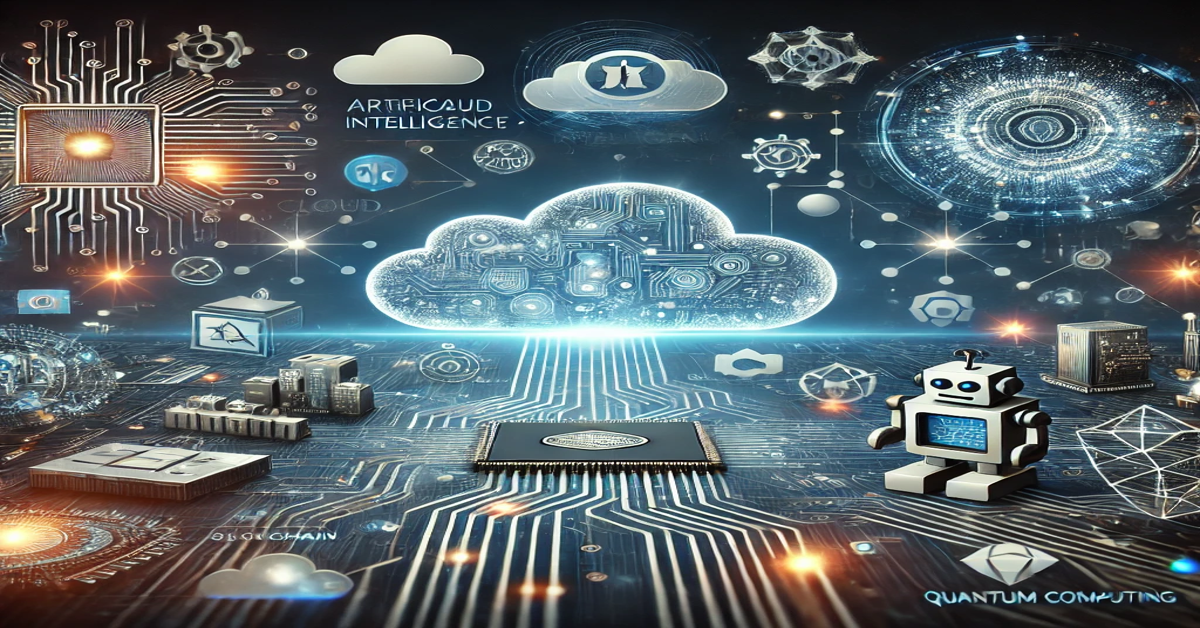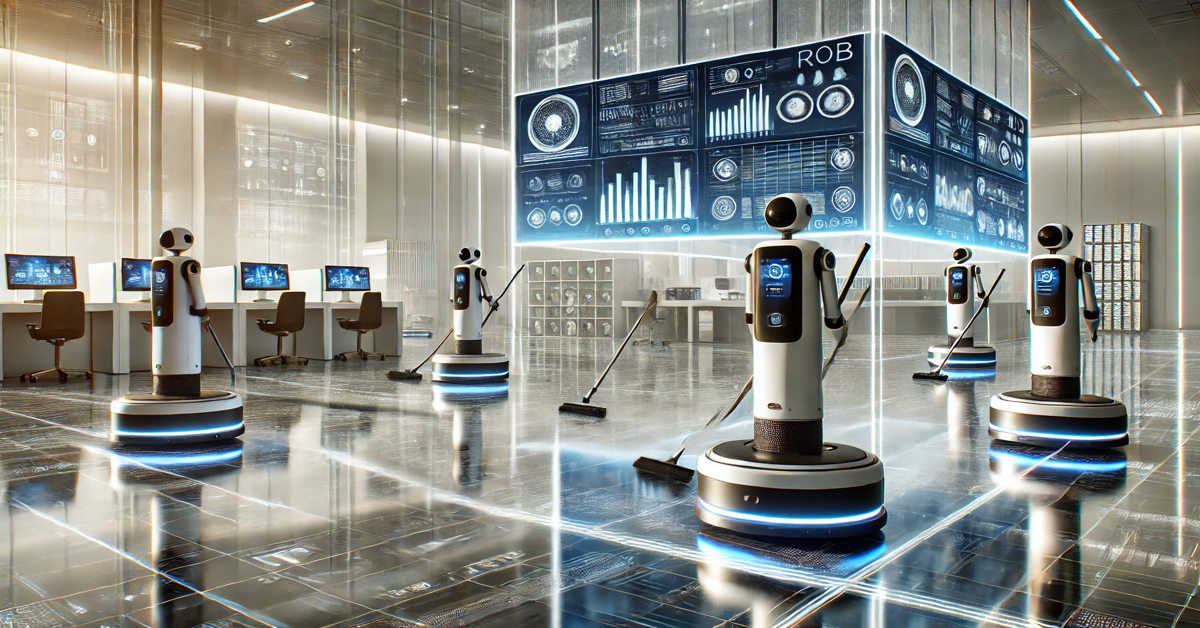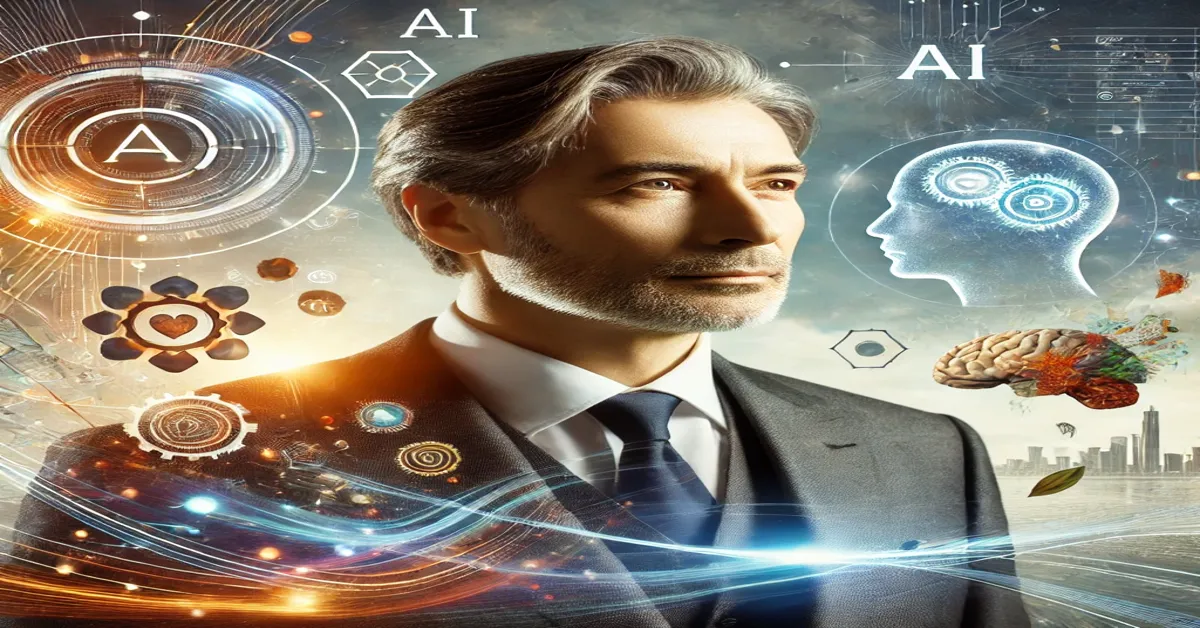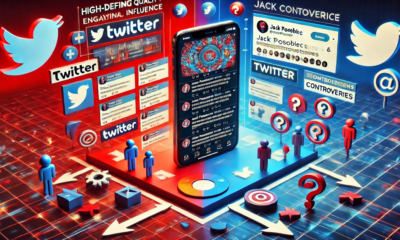Technology
The Tech Industry: Innovation, Trends, and Challenges

The technology industry, often referred to as the tech industry, has become a vital pillar of modern society, driving economies, shaping lifestyles, and influencing global policies. Over the past few decades, technological advancements have revolutionized industries across the globe, from healthcare and education to entertainment and finance. The rapid pace of innovation and the growing dependence on digital technologies have made the tech industry one of the most lucrative and influential sectors in the world.
This article will explore the current landscape of the tech industry, examining emerging trends, key players, and the challenges faced by companies operating in this space. It will also delve into the role of technology in shaping the future of business, society, and the global economy.
The Evolution of the Tech Industry
The tech industry has come a long way since the first computer was built. The early days of technology were characterized by massive machines with limited functionality. However, the rise of personal computers in the 1980s, followed by the advent of the internet in the 1990s, marked a new era for the industry. The creation of the World Wide Web in particular opened up limitless opportunities for businesses, enabling them to connect with consumers on a global scale.
The late 20th and early 21st centuries witnessed the rise of major tech giants such as Microsoft, Apple, Amazon, and Google, all of which became household names and fundamentally transformed how people interacted with technology. These companies paved the way for the internet era, introducing a new digital economy based on e-commerce, online services, and digital content. Meanwhile, innovations such as smartphones, cloud computing, and social media reshaped the way people communicated, consumed information, and conducted business.
Today, the tech industry continues to evolve rapidly, with emerging fields such as artificial intelligence (AI), blockchain, quantum computing, and biotechnology driving the next wave of innovation.
Key Segments of the Tech Industry
The tech industry is vast and diverse, encompassing numerous sectors and sub-sectors that cater to different needs and industries. Some of the key segments of the tech industry include:
1. Software Development and Cloud Computing
Software development is one of the primary pillars of the tech industry. It encompasses the design, creation, and maintenance of software programs that run on computers, smartphones, and other devices. From operating systems and productivity tools to entertainment and gaming software, software development plays a crucial role in the daily lives of individuals and businesses.
Cloud computing, on the other hand, has revolutionized how businesses store, process, and manage data. By shifting from traditional on-premises IT infrastructure to cloud-based services, companies have reduced costs, increased scalability, and improved operational efficiency. Major cloud service providers such as Amazon Web Services (AWS), Microsoft Azure, and Google Cloud dominate this space, offering cloud infrastructure, platform, and software-as-a-service (SaaS) solutions to organizations worldwide.
2. Artificial Intelligence (AI) and Machine Learning
Artificial intelligence (AI) and machine learning (ML) have emerged as game-changers in the tech industry. These technologies enable machines to mimic human intelligence and make data-driven decisions without human intervention. AI and ML are being applied across various sectors, including healthcare, finance, automotive, and manufacturing.
In healthcare, AI algorithms are helping doctors diagnose diseases, predict patient outcomes, and personalize treatment plans. In the automotive industry, AI powers autonomous vehicles, making transportation safer and more efficient. The rapid advancement of AI is also driving the development of intelligent personal assistants like Siri, Alexa, and Google Assistant.
3. Cybersecurity
As technology becomes more integrated into our daily lives, cybersecurity has become a top priority for organizations and governments worldwide. Cybersecurity refers to the protection of computer systems, networks, and data from digital threats such as hacking, malware, and data breaches.
With the increasing frequency and sophistication of cyberattacks, businesses are investing heavily in advanced security technologies to safeguard sensitive data and ensure privacy. Innovations such as biometric authentication, blockchain-based security solutions, and AI-powered threat detection are shaping the future of cybersecurity.
4. Blockchain and Cryptocurrency
Blockchain technology, which underpins cryptocurrencies such as Bitcoin and Ethereum, has garnered significant attention in recent years. Blockchain is a decentralized, transparent, and secure system for recording transactions. It has the potential to revolutionize various industries by enabling more efficient and secure transactions.
Beyond cryptocurrency, blockchain is being explored for applications in supply chain management, digital identity verification, and even voting systems. Many companies are investing in blockchain research and development to unlock its potential for enhancing transparency, security, and efficiency across industries.
5. Biotechnology and Health Tech
The intersection of technology and healthcare, often referred to as health tech, is one of the most promising areas of growth in the tech industry. Advances in biotechnology, telemedicine, and wearable health devices are transforming how healthcare is delivered and experienced.
Wearables like the Apple Watch and Fitbit are empowering individuals to monitor their health and fitness in real-time, while telemedicine platforms are making healthcare more accessible by enabling remote consultations with doctors. AI and machine learning are also being applied to drug discovery, genetic research, and disease prevention, paving the way for personalized medicine.
6. Consumer Electronics and the Internet of Things (IoT)
Consumer electronics, including smartphones, laptops, smart TVs, and home appliances, continue to evolve at a rapid pace. The Internet of Things (IoT) refers to the network of connected devices that communicate with each other and the internet to collect and share data.
Smart homes, powered by IoT technology, allow users to control lights, thermostats, security systems, and other devices remotely through their smartphones. The growth of IoT is driving innovations in sectors such as manufacturing, logistics, and agriculture, where connected devices are being used to optimize operations and increase efficiency.
Emerging Trends in the Tech Industry
The tech industry is constantly evolving, with new trends and innovations emerging at a rapid pace. Some of the most notable trends in the tech industry today include:
1. 5G Technology
5G, the fifth generation of wireless technology, promises to revolutionize how we connect to the internet and interact with digital services. With significantly faster speeds and lower latency compared to 4G, 5G will enable new use cases such as autonomous vehicles, smart cities, and advanced augmented and virtual reality experiences.
5G is also expected to drive the growth of IoT, enabling billions of devices to connect seamlessly and communicate in real-time. Telecom companies around the world are investing heavily in 5G infrastructure to meet the growing demand for high-speed, low-latency connectivity.
2. Quantum Computing
Quantum computing is an emerging field that aims to harness the principles of quantum mechanics to perform calculations at speeds far beyond the capabilities of traditional computers. Quantum computers use quantum bits, or qubits, which can represent multiple states simultaneously, allowing them to process vast amounts of data in parallel.
While quantum computing is still in its early stages, it has the potential to revolutionize industries such as cryptography, drug discovery, and materials science. Companies like IBM, Google, and Microsoft are at the forefront of quantum computing research, investing in hardware and software solutions that will unlock the potential of this groundbreaking technology.
3. Augmented Reality (AR) and Virtual Reality (VR)
Augmented reality (AR) and virtual reality (VR) are rapidly gaining traction in both the consumer and enterprise sectors. AR overlays digital content on the real world, while VR creates immersive digital environments that users can interact with using headsets.
AR and VR are transforming industries such as gaming, entertainment, education, and retail. In gaming, VR allows players to experience fully immersive worlds, while AR is being used in retail apps to allow customers to try on clothes or visualize furniture in their homes before making a purchase.
4. Sustainability and Green Tech
Sustainability has become a key priority for many tech companies as concerns about climate change and environmental impact continue to grow. Green tech refers to technologies that promote environmental sustainability, such as renewable energy, energy-efficient devices, and electric vehicles.
The tech industry is investing in sustainable practices, from developing energy-efficient data centers to creating products that use recyclable materials. Companies like Tesla, which produces electric vehicles and solar products, are leading the charge in the green tech space.
Challenges Faced by the Tech Industry
While the tech industry has experienced rapid growth and innovation, it is also facing several challenges that could impact its future trajectory. Some of the key challenges include:
1. Privacy and Data Security
As the amount of personal and sensitive data being generated and stored continues to grow, privacy and data security have become major concerns. Cyberattacks, data breaches, and surveillance have raised questions about how companies and governments collect, store, and protect user data.
Regulations like the General Data Protection Regulation (GDPR) in Europe have been introduced to protect individuals’ privacy rights, but there is still much work to be done to ensure that companies handle data responsibly and transparently.
2. Regulation and Antitrust Issues
As tech companies continue to grow in size and influence, they are facing increased scrutiny from governments around the world. Issues such as antitrust violations, monopolistic behavior, and the role of big tech in shaping public discourse are leading to calls for greater regulation of the industry.
Governments are considering new policies to address concerns about market dominance, data privacy, and the ethical use of emerging technologies. The outcome of these regulatory debates will shape the future of the tech industry.
3. Talent Shortage
The demand for skilled tech workers continues to outpace supply, leading to a talent shortage in areas such as software development, data science, cybersecurity, and AI. Companies are competing for top talent and investing in training and education programs to bridge the skills gap.
The shortage of qualified workers is also leading to rising salaries and fierce competition for top candidates, which could impact the growth of tech companies and the industry as a whole.
Conclusion
The tech industry is one of the most dynamic and fast-evolving sectors in the global economy. From software development and AI to blockchain and biotechnology, technological advancements continue to drive innovation across all industries. The rise of new trends such as 5G, quantum computing, and sustainability is shaping the future of technology and creating new opportunities for businesses and consumers alike.
As the industry grows, it faces significant challenges related to privacy, regulation, and talent shortages. However, the potential for transformative change and societal impact remains high. The tech industry will continue to play a central role in shaping the future of business, society, and global economies.
FAQs
1. What is the tech industry? The tech industry encompasses all businesses involved in the development, production, and distribution of technology products and services. This includes hardware, software, telecommunications, and digital services.
2. What are some current trends in the tech industry? Some current trends include 5G technology, artificial intelligence, blockchain, quantum computing, augmented and virtual reality, and green tech.
3. What are the biggest challenges in the tech industry? Privacy and data security, regulation and antitrust issues, and the talent shortage are among the biggest challenges facing the tech industry.
4. How is technology impacting the healthcare industry? Technology is revolutionizing healthcare through innovations such as telemedicine, AI-driven diagnostics, wearable health devices, and personalized medicine.
5. What role does sustainability play in the tech industry? Sustainability is becoming increasingly important as the tech industry focuses on reducing environmental impact through energy-efficient devices, renewable energy, and green tech solutions.
6. What is the future of quantum computing? Quantum computing has the potential to revolutionize fields like cryptography, drug discovery, and data analysis, although it is still in its early stages of development.
Technology
Janitor AI: Revolutionizing Maintenance and Facility Management

In the ever-evolving world of technology, artificial intelligence (AI) is increasingly becoming a cornerstone in various industries, transforming traditional processes into more efficient, data-driven operations. One such application of AI that has recently gained prominence is Janitor AI, an innovative solution tailored for maintenance and facility management. Designed to optimize cleaning schedules, reduce costs, and improve overall facility hygiene, Janitor AI represents a leap forward in the way commercial, industrial, and public spaces are maintained.
What is Janitor AI?
Janitor AI’s is an artificial intelligence-driven system specifically designed to manage, monitor, and optimize janitorial and maintenance services. This technology integrates machine learning, sensors, robotics, and advanced algorithms to ensure facilities remain clean, safe, and operational with minimal human intervention. Janitor AI’s does not replace janitorial staff but enhances their productivity and efficiency by automating repetitive tasks, predicting maintenance needs, and providing actionable insights.
By analyzing vast amounts of data from sensors, cameras, and usage logs, Janitor AI’s can determine the optimal timing for cleaning tasks, identify areas requiring immediate attention, and even predict equipment failures. This results in a smarter, more responsive cleaning and maintenance strategy that ensures facilities are always at their best.
Core Features of Janitor AI
- Predictive Maintenance: Predictive maintenance is one of the standout features of Janitor AI’s. By analyzing data from IoT sensors and other connected devices, the system can predict when equipment or facilities require servicing. For instance, it can identify when an HVAC system needs cleaning or when a restroom is likely to run out of supplies.
- Automated Cleaning Robotics: Many Janitor AI’s systems are integrated with robotic cleaners. These robots, equipped with AI, can autonomously navigate spaces, avoiding obstacles, and performing cleaning tasks like vacuuming, mopping, and disinfecting. They can be programmed to clean specific areas during off-peak hours or in response to specific triggers.
- Data-Driven Insights: Janitor AI collects and analyzes data on facility usage patterns, high-traffic zones, and peak hours. This data enables facility managers to allocate resources more effectively and ensure that cleaning and maintenance efforts are targeted where they are most needed.
- Real-Time Monitoring and Alerts: Sensors connected to Janitor AI’s systems can monitor conditions like air quality, temperature, humidity, and cleanliness in real time. If any parameter falls below a set threshold, the system alerts maintenance staff, ensuring swift action.
- Customizable Cleaning Schedules: With Janitor AI’s, cleaning schedules are no longer static. The system can dynamically adjust cleaning frequencies based on real-time data, ensuring that resources are used efficiently without compromising hygiene standards.
- Integration with Facility Management Systems: Janitor AI’s can seamlessly integrate with broader facility management platforms, enabling a holistic approach to building maintenance. This integration allows for consolidated reporting, streamlined workflows, and better overall coordination.
Applications of Janitor AI
Janitor AI’s has applications across a wide range of sectors, including:
- Healthcare: In hospitals and clinics, maintaining cleanliness is critical. Janitor AI’s ensures that high-touch surfaces are cleaned frequently and alerts staff to potential hygiene risks, helping to reduce the spread of infections.
- Education: Schools and universities often face challenges in keeping large campuses clean. Janitor AI helps allocate cleaning resources effectively, focusing on high-traffic areas like cafeterias, restrooms, and lecture halls.
- Hospitality: Hotels, resorts, and restaurants benefit from Janitor AI’s by ensuring that guest areas remain spotless and supplies are replenished promptly, enhancing customer satisfaction.
- Retail: In retail environments, cleanliness directly impacts customer experience. Janitor AI’s helps maintain a clean and welcoming atmosphere, particularly in high-traffic zones like entrances and food courts.
- Transportation: Airports, train stations, and bus terminals see thousands of passengers daily. Janitor AI’s ensures these spaces remain clean and sanitary, even during peak hours.
- Corporate Offices: With hybrid work models becoming the norm, Janitor AI’s can adapt cleaning schedules to fluctuating office occupancy levels, ensuring cost efficiency without sacrificing cleanliness.
Benefits of Janitor AI
- Enhanced Efficiency: By automating routine tasks and optimizing resource allocation, Janitor AI’s significantly improves the efficiency of janitorial services. Staff can focus on more complex or specialized tasks, leaving repetitive work to AI systems.
- Cost Savings: Predictive maintenance and optimized scheduling reduce waste and lower operational costs. For example, unnecessary cleaning can be minimized, and equipment downtime can be avoided.
- Improved Hygiene and Safety: With its ability to monitor cleanliness in real-time and respond promptly to issues, Janitor AI’s helps maintain high hygiene standards, ensuring safer environments for occupants.
- Sustainability: Janitor AI promotes sustainable practices by reducing water, energy, and cleaning product usage. Its data-driven approach ensures that resources are used judiciously.
- Scalability: Whether it’s a small office or a sprawling airport, Janitor AI’s systems can scale to meet the needs of any facility. This flexibility makes it suitable for various industries and environments.
- Employee Satisfaction: By taking over mundane and physically demanding tasks, Janitor AI’s allows janitorial staff to work in less stressful conditions, leading to higher job satisfaction and retention.
Challenges in Implementing Janitor AI
Despite its many benefits, implementing Janitor AI comes with its own set of challenges:
- High Initial Investment: Deploying an AI-powered system often requires significant upfront costs, including purchasing hardware, installing sensors, and integrating systems.
- Training Requirements: Janitorial staff need training to work alongside AI systems, especially when it comes to handling advanced robotics or interpreting data insights.
- Data Privacy Concerns: Facilities must ensure that data collected by Janitor AI’s systems, particularly in sensitive environments like healthcare, is handled securely to protect privacy.
- Maintenance of AI Systems: AI-powered systems and robotics require regular maintenance to function effectively, which can add to operational costs.
- Resistance to Change: Some organizations may face resistance from staff or management when adopting new technologies, particularly if there are concerns about job displacement.
The Future of Janitor AI
As AI technology continues to advance, the capabilities of Janitor AI are expected to expand. Future iterations may include:
- Enhanced Robotics: More advanced robots with improved navigation, adaptability, and multitasking capabilities will further streamline janitorial operations.
- AI-Powered Sanitization: Ultraviolet (UV) light and other sanitization technologies could be integrated into Janitor AI systems to enhance disinfection processes.
- Sustainability Metrics: Janitor AI’s systems could provide detailed reports on resource usage, enabling facilities to set and achieve sustainability goals.
- Personalized Cleaning Experiences: In environments like hotels, Janitor AI might enable personalized cleaning preferences for individual guests, enhancing customer satisfaction.
- Interoperability with Smart Cities: As cities become smarter, Janitor AI could integrate with broader urban management systems, contributing to cleaner and more sustainable urban environments.
Conclusion
Janitor AI is a groundbreaking solution that has the potential to revolutionize maintenance and facility management. By leveraging the power of artificial intelligence, it offers a smarter, more efficient, and cost-effective way to maintain hygiene and operational efficiency in a wide range of environments. While there are challenges to its adoption, the benefits far outweigh the drawbacks, making Janitor AI a promising technology for the future.
FAQs
- What is the primary purpose of Janitor AI? The primary purpose of Janitor AI is to optimize cleaning and maintenance tasks through automation, data analysis, and predictive maintenance, enhancing efficiency and hygiene standards.
- Does Janitor AI replace human janitorial staff? No, Janitor AI complements human staff by automating repetitive tasks and providing insights that help janitors work more efficiently.
- Is Janitor AI suitable for small businesses? Yes, Janitor AI systems can be scaled to suit the needs of small businesses, making it a flexible solution for facilities of all sizes.
- What are the main challenges in implementing Janitor AI? Challenges include high initial costs, the need for staff training, data privacy concerns, and resistance to change within organizations.
- How does Janitor AI contribute to sustainability? Janitor AI promotes sustainability by optimizing resource usage, reducing waste, and enabling data-driven decisions that minimize environmental impact.
- What industries can benefit most from Janitor AI? Industries such as healthcare, education, hospitality, retail, transportation, and corporate offices can benefit significantly from the enhanced efficiency and hygiene standards provided by Janitor AI.
Technology
Sebastian Rogers: Insight into His Life and Contributions

Sebastian Rogers is a name that resonates across multiple disciplines due to his diverse talents and impactful contributions. A polymath in the truest sense, Rogers has excelled in fields ranging from technology and science to art and philanthropy. This article delves deep into his life, achievements, and the legacy he continues to build. Spanning over 3,000 words, we aim to provide a detailed narrative that not only informs but also inspires readers to explore the breadth of human potential.
Early Life and Education
Sebastian Rogers was born in a modest household in [insert location], where his innate curiosity and determination were evident from a young age. Growing up, Rogers showed an exceptional aptitude for both academics and creative pursuits. By the time he entered high school, his penchant for innovation had already set him apart from his peers.
His educational journey began at [insert school/university name], where he pursued studies in [insert field]. During this time, Rogers displayed a rare combination of analytical rigor and imaginative thinking. These traits laid the foundation for his later achievements, allowing him to seamlessly bridge the gap between seemingly disparate domains.
Professional Milestones
Contributions to Technology
Sebastian Rogers’ contributions to technology are groundbreaking. As the founder of [insert company or initiative], he pioneered advancements in [specific technology/area], which have since become industry standards. His work in artificial intelligence (AI) and machine learning has been particularly notable, with applications ranging from healthcare to sustainable energy.
One of his most celebrated inventions, [insert specific invention or project], revolutionized the way [specific process or industry] operates. By combining cutting-edge algorithms with a user-centric design philosophy, Rogers’ innovations have not only enhanced efficiency but also improved accessibility for underserved populations.
Artistic Endeavors
Beyond his technological achievements, Rogers has made significant strides in the arts. A self-taught painter and musician, he believes that creativity is essential to innovation. His art exhibitions, including [insert notable exhibition], have drawn critical acclaim for their unique blend of [specific style or theme]. Similarly, his musical compositions, often described as a fusion of [genres], showcase his ability to convey profound emotions through sound.
Scientific Research
Rogers is also deeply committed to advancing scientific knowledge. His research in [specific scientific field] has led to breakthroughs that address some of the world’s most pressing challenges. For instance, his studies on [specific topic] have provided new insights into [specific outcome]. Collaborating with leading institutions and researchers worldwide, Rogers continues to push the boundaries of what is scientifically possible.
Philanthropy and Social Impact
Sebastian Rogers’ commitment to making a positive impact extends far beyond his professional endeavors. As a philanthropist, he has launched several initiatives aimed at addressing issues such as poverty, education, and environmental conservation. His foundation, [insert name], has funded numerous projects, including [specific initiative], which has significantly improved the lives of [specific group of people].
In addition, Rogers has been a vocal advocate for social justice, leveraging his platform to raise awareness about [specific issue]. Through public speaking, writing, and community engagement, he inspires others to take action and contribute to societal progress.
Personal Philosophy and Legacy
At the core of Sebastian Rogers’ success is his personal philosophy: “Innovation thrives at the intersection of curiosity and compassion.” This belief has guided him throughout his career, influencing not only what he creates but also how he creates it.
Rogers’ legacy is multifaceted. As a technologist, artist, and humanitarian, he has set an example of what it means to lead a purpose-driven life. His ability to integrate knowledge from various domains has not only redefined traditional boundaries but also paved the way for future generations to think more holistically.
The Future
Looking ahead, Sebastian Rogers shows no signs of slowing down. His upcoming projects, including [specific project], promise to further his mission of creating a more equitable and sustainable world. By continuing to challenge conventional wisdom and explore uncharted territories, Rogers remains a beacon of inspiration for innovators everywhere.
FAQs
1. Who is Sebastian Rogers? Sebastian Rogers is a multidisciplinary innovator known for his contributions to technology, art, science, and philanthropy. He has made significant advancements in areas such as artificial intelligence, sustainable energy, and social justice.
2. What are some of Sebastian Rogers’ notable achievements? Rogers has pioneered groundbreaking technologies, showcased critically acclaimed art exhibitions, conducted impactful scientific research, and launched philanthropic initiatives addressing global challenges.
3. What is Sebastian Rogers’ personal philosophy? His philosophy is, “Innovation thrives at the intersection of curiosity and compassion,” emphasizing the importance of integrating creativity and empathy into problem-solving.
4. How has Sebastian Rogers impacted the field of technology? Rogers has developed cutting-edge solutions in artificial intelligence and machine learning, revolutionizing industries such as healthcare and energy while enhancing accessibility.
5. What role does Sebastian Rogers play in philanthropy? He is the founder of [insert foundation name], which focuses on issues like poverty alleviation, education, and environmental conservation, benefiting underserved communities worldwide.
6. What can we expect from Sebastian Rogers in the future? Rogers is currently working on [specific upcoming projects], which aim to further his mission of creating a more equitable and sustainable world.
Technology
Sarah Boone: Innovator and Pioneer in Modern Laundry Practices

Sarah Boone, an African American inventor from the 19th century, is celebrated for her groundbreaking contribution to household innovation. She is most renowned for her 1892 patent for an improved ironing board, which played a critical role in the development of modern laundry practices. Boone’s story is not only one of innovation but also of determination and resilience in a period marked by social and racial inequality.
This article delves into Sarah Boone’s life, her invention, its historical and cultural significance, and its lasting impact on society. By examining her journey, we gain insight into the challenges faced by African American inventors during her time and the indelible mark Boone left on history.
Early Life of Sarah Boone
Sarah Boone was born as Sarah Marshall in 1832 in Craven County, North Carolina, a time and place where slavery and racial discrimination were deeply entrenched in American society. While details about her early life are scarce, it is believed that she was born into a family of enslaved people or free African Americans.
In 1847, Sarah married James Boone, a freedman, and the couple eventually moved to New Haven, Connecticut. This relocation was likely influenced by the relatively progressive attitudes in the northern states compared to the South. In New Haven, Sarah Boone worked as a dressmaker, a profession that played a pivotal role in inspiring her later invention.
The Challenges of Dressmaking
As a dressmaker, Sarah Boone was acutely aware of the challenges involved in ironing garments, particularly women’s dresses, which often featured complex shapes and designs. The ironing tools available in the mid-19th century were rudimentary and inefficient. Flat wooden planks or tabletops were commonly used for pressing clothes, but these made it difficult to iron the curved areas of garments, such as sleeves and bodices, effectively.
Boone recognized that there was a pressing need for a more efficient solution. Her hands-on experience as a dressmaker gave her a unique perspective on the limitations of existing tools and the potential for innovation in this space.
The Invention of the Improved Ironing Board
On April 26, 1892, Sarah Boone was awarded U.S. Patent No. 473,653 for her improved ironing board. Her design was specifically tailored to address the challenges of ironing intricate garments. Here are the key features of Boone’s invention:
- Curved Design: Unlike the flat, rudimentary boards of her time, Boone’s ironing board featured a narrow, curved design. This shape made it significantly easier to iron the sleeves and bodices of women’s dresses.
- Adjustability: Her design allowed for adjustments in height and positioning, making it more versatile and user-friendly.
- Portability: Boone’s ironing board was collapsible, which meant it could be easily stored when not in use—a practical feature for households with limited space.
The improved ironing board revolutionized the way clothes were pressed, making the process more efficient and precise. Boone’s innovation addressed a specific need in the garment care industry and became a staple in households worldwide.
Significance of the Patent
Sarah Boone’s patent for the improved ironing board was groundbreaking for several reasons:
- Representation of African American Inventors: At a time when African Americans faced systemic discrimination and limited opportunities, Boone’s patent represented a significant achievement. It demonstrated the ingenuity and contributions of African American inventors despite the challenges they faced.
- Empowering Women: Boone’s invention directly benefited women, who were primarily responsible for household chores, including laundry. By simplifying the ironing process, her innovation helped to reduce the time and effort required for this labor-intensive task.
- Paving the Way for Modern Innovations: Boone’s work laid the foundation for further advancements in household tools and appliances. Her focus on user-centric design and practicality continues to influence product development to this day.
The Historical Context
To fully appreciate Sarah Boone’s achievements, it is essential to understand the historical context in which she lived. The late 19th century was a period of significant social and technological change in the United States. However, it was also a time of deep racial inequality and limited opportunities for African Americans, particularly women.
Challenges Faced by African American Inventors:
- African American inventors often struggled to secure patents for their work due to systemic racism.
- They faced financial barriers that made it difficult to develop and market their inventions.
- Recognition for their contributions was often overshadowed or appropriated by others.
Despite these challenges, individuals like Sarah Boone persevered, leaving a lasting legacy that continues to inspire future generations.
Legacy and Impact
Sarah Boone’s invention had a profound impact on both household practices and the broader perception of African American inventors. Her improved ironing board became an indispensable tool for households and dressmakers alike, streamlining the process of garment care and enhancing the quality of pressed clothing.
Influence on Future Generations:
- Boone’s work paved the way for other African American inventors, such as Garrett Morgan (inventor of the traffic signal) and Madam C.J. Walker (a pioneer in the beauty industry).
- Her story serves as a reminder of the resilience and creativity of marginalized communities in the face of adversity.
Recognition: While Sarah Boone’s contributions were not widely celebrated during her lifetime, modern historians and educators have worked to ensure her place in the annals of history. She is now recognized as a trailblazer who defied societal norms and made a lasting impact on the lives of countless individuals.
Conclusion
Sarah Boone’s life and invention embody the spirit of innovation and perseverance. Her improved ironing board addressed a specific need in her time and continues to influence household practices today. By securing a patent during an era of significant racial and gender-based discrimination, Boone demonstrated extraordinary determination and creativity.
Boone’s legacy extends beyond her invention. She represents the untold stories of countless African American inventors whose contributions have shaped the world we live in. Her story is a testament to the power of ingenuity and the importance of recognizing and celebrating the achievements of marginalized individuals in history.
FAQs
1. What did Sarah Boone invent? Sarah Boone invented an improved ironing board in 1892, designed to make ironing garments, especially women’s dresses, more efficient.
2. Why is Sarah Boone’s invention significant? Her invention revolutionized garment care by introducing a curved, adjustable, and portable ironing board, addressing the challenges of pressing intricate clothing designs.
3. What challenges did Sarah Boone face as an inventor? As an African American woman in the 19th century, Boone faced systemic racism, limited access to resources, and societal barriers to recognition.
4. How did Sarah Boone’s invention impact society? Boone’s ironing board simplified household chores, empowered women by reducing labor-intensive tasks, and paved the way for modern household innovations.
5. Where was Sarah Boone from? Sarah Boone was born in Craven County, North Carolina, and later moved to New Haven, Connecticut.
6. How is Sarah Boone remembered today? Sarah Boone is celebrated as a pioneering African American inventor whose contributions have had a lasting impact on household practices and innovation.
-

 Business3 months ago
Business3 months agoFSI Blog: Your Gateway to Financial, Strategic, & Industry Insights
-

 Business3 months ago
Business3 months agoAmazon Smile: Supporting Charitable through Online Shopping
-

 News2 months ago
News2 months agoJack Posobiec Twitter: Controversies, Influence, & Online Presence
-

 Technology3 months ago
Technology3 months agoUnlocking the Future of Cloud with SDCS Technology
-

 Entertainment3 months ago
Entertainment3 months agoBasketball Legends: The Icons Who Shaped the Game
-

 News3 months ago
News3 months agoLakers Trade News: Analysis, Moves, and Future Outlook
-

 Business3 months ago
Business3 months ago5StarsStocks.com Dividend Stocks: Building Wealth with Dividend Investments
-

 General2 months ago
General2 months agoFarmer’s Dog: Revolution Pet Nutrition with Fresh, Healthy Meals
